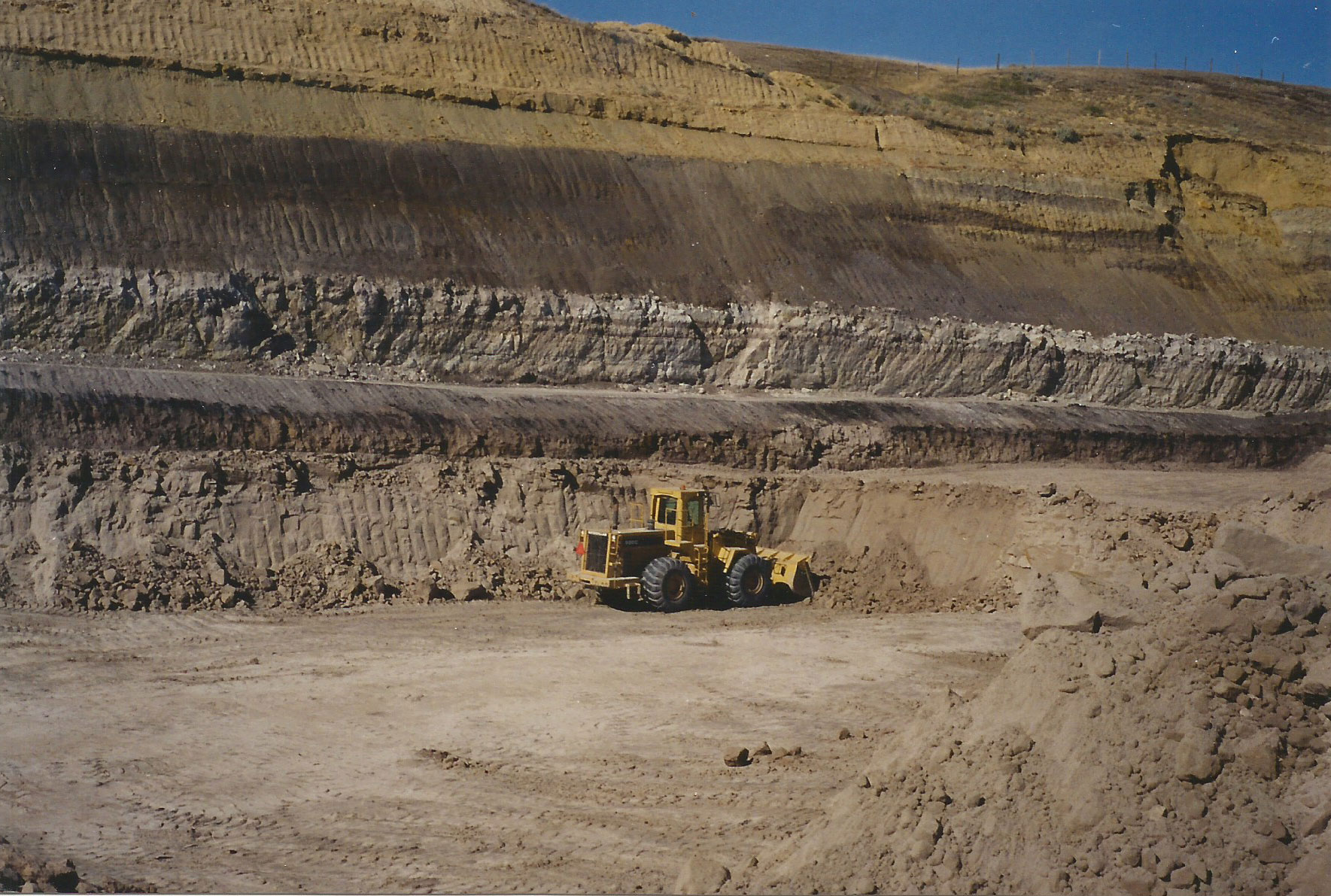| Monthly Tech-Tip | No tracking! No ads! | |
A2 Ball Clay
Description: PR#3 A2, Saskatchewan ball clay
| Oxide | Analysis | Formula | Tolerance |
|---|---|---|---|
| CaO | 0.25% | 0.02 | |
| K2O | 0.69% | 0.04 | |
| MgO | 0.43% | 0.06 | |
| Na2O | 0.04% | - | |
| TiO2 | 0.72% | 0.05 | |
| Al2O3 | 18.99% | 1.00 | |
| P2O5 | 0.03% | - | |
| SiO2 | 65.12% | 5.82 | |
| Fe2O3 | 1.84% | 0.06 | |
| MnO | 0.01% | - | |
| LOI | 10.58% | n/a | |
| Oxide Weight | 473.31 | ||
| Formula Weight | 529.32 | ||
Notes
A2 is a ball clay mined in a quarry about 5 km west of Ravenscrag, Sask. It has a very high plasticity and is suitable as an additive to all types of stoneware and earthenware bodies. This material is used in many bodies made by Plainsman Clays.
A2 has intrinsic iron content, which makes it burn cream-white on its own (but progressing to tan or brown when feldspar is present). It also has some physical iron concretion particle,s which act as a source of speckle and iron blossoms in reduction-fired clay bodies.
A2 has natural soluble salts that migrate to the surface during drying and leave a brown coloration on the buff-colored fired surface. However, with a 0.35% barium carbonate addition, the solubles are precipitated within. These soluble salts cause gelling during the deflocculation process and thus prevent A2 from being used in slip bodies.
388 Ba ppm
34 Sr pmm
23 Y ppm
10 Sc ppm
413 Zr ppm
1 Be ppm
70 V ppm
Related Information
Ravenscrag Saskatchewan clays fired at cone 10R

This picture has its own page with more detail, click here to see it.
Glazeless (top) and with glaze (bottom): A1 (bentonitic), A2 (ball clay), A3 (stoneware), 3B (porcelains), 3C (lignitic ball clay), 3D (silt). The bottom row has also shows soluble salts (SOLU test).
Plainsman A2 Ball Clay fired test bars

This picture has its own page with more detail, click here to see it.
Cone 10 reduction (top), cone 11 down to 8 oxidation below that.
IXL Industries clay quarry near Ravenscrag, Saskatchewan in 1984.

This picture has its own page with more detail, click here to see it.
Layers of the Whitemud Formation are being mined. The layer being extracted is a silty stoneware they referred to as the "D member" (equivalent to Plainsman PR3D which is mined several miles to the east for use in pottery). It was great for bricks because it dried quickly and had minimal drying shrinkage. Below the D they continued to mine a much whiter kaolinized sand of equal or more thickness. Above the D is a ball clay (equivalent to Plainsman A2). Above that is a light-burning stoneware (the combined layers that Plainsman extracts separately as A3 and 3B). A foot-thick layer of much harder volcanic ash is visible in the green overburden at the top. From these stoneware clays they extruded brick of exceptional quality, firing it as high as cone 10. Twenty years later, the company reclaimed this land - today you would be unable to find where it was located.
Mel Noble at Plainsman Clay's Ravenscrag, Saskatchewan quarry

This picture has its own page with more detail, click here to see it.
Six different sedimentary clays are extracted from this quarry. It was opened in the 1970s, the best location available at the time. These test bars were made by slaking select lumps from each layer (thus exhibiting their best performance). The left-most dried test bars show the layers (top to bottom). The A1 top layer is the most plastic and has the most iron contamination (it is used in our most speckled reduction firing bodies). A2, the second one down, is a ball clay (similar to commercial products, although darker burning), it is very refractory and the base for Plainsman Fireclay. A3, third from top, is a complete buff high-temperature stoneware (like H550), although sandy and over-mature at cone 10. 3B, third from bottom, is a smooth medium-temperature stoneware; it contains significant natural feldspar (although fired color and particulate contamination are the most variable). The second from the bottom, 3C. fires the whitest and is the most refractory (it is the base for H441G). The bottom one, 3D, the best product in the quarry. Although the least plastic and most silty, it is also very fine particled and the cleanest (consistently free of particulate impurities and sand), it pairs very well with a ball clay to make a cone 6 stoneware.
Core sampling at a Plainsman quarry during summer 2021

This picture has its own page with more detail, click here to see it.
We are drilling test holes down through about 40 feet of overburden into the seven layers of clay to be mined. The rig assembles five-foot auger-sections, drilling down and pulling out two sections at-a-time. We examine the auger, identify the clays and record the results. At the middle of the auger-full shown you can see the division between the A2 ball clay and the A3 white stoneware, it was about 50 feet down. This hole was 80 feet, that spans tens of millions of years of sedimentation! This is the first time we have been able to sample the entire depth of the overburden, a highly plastic red burning low temperature clay, now we can assess whether it is a useful product.
Links
| Materials |
Plainsman Red Fireclay
|
| Typecodes |
Ball Clay
Ball clays are abundant and very plastic and are used in all types of plastic forming bodies. They are not as white-burning or refractory as kaolins but lower in iron and fluxes than bentonites. |
| By Tony Hansen Follow me on        |  |
Got a Question?
Buy me a coffee and we can talk

https://digitalfire.com, All Rights Reserved
Privacy Policy
